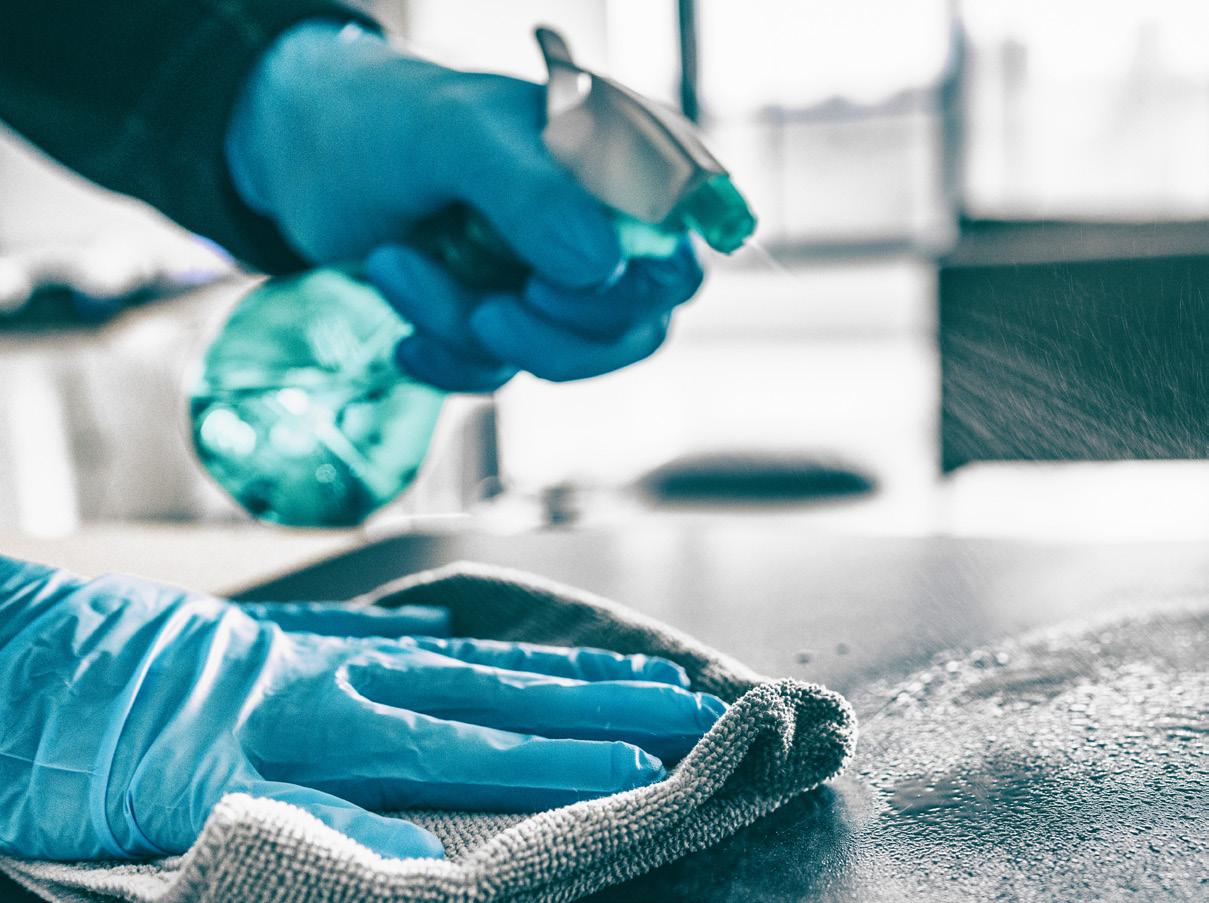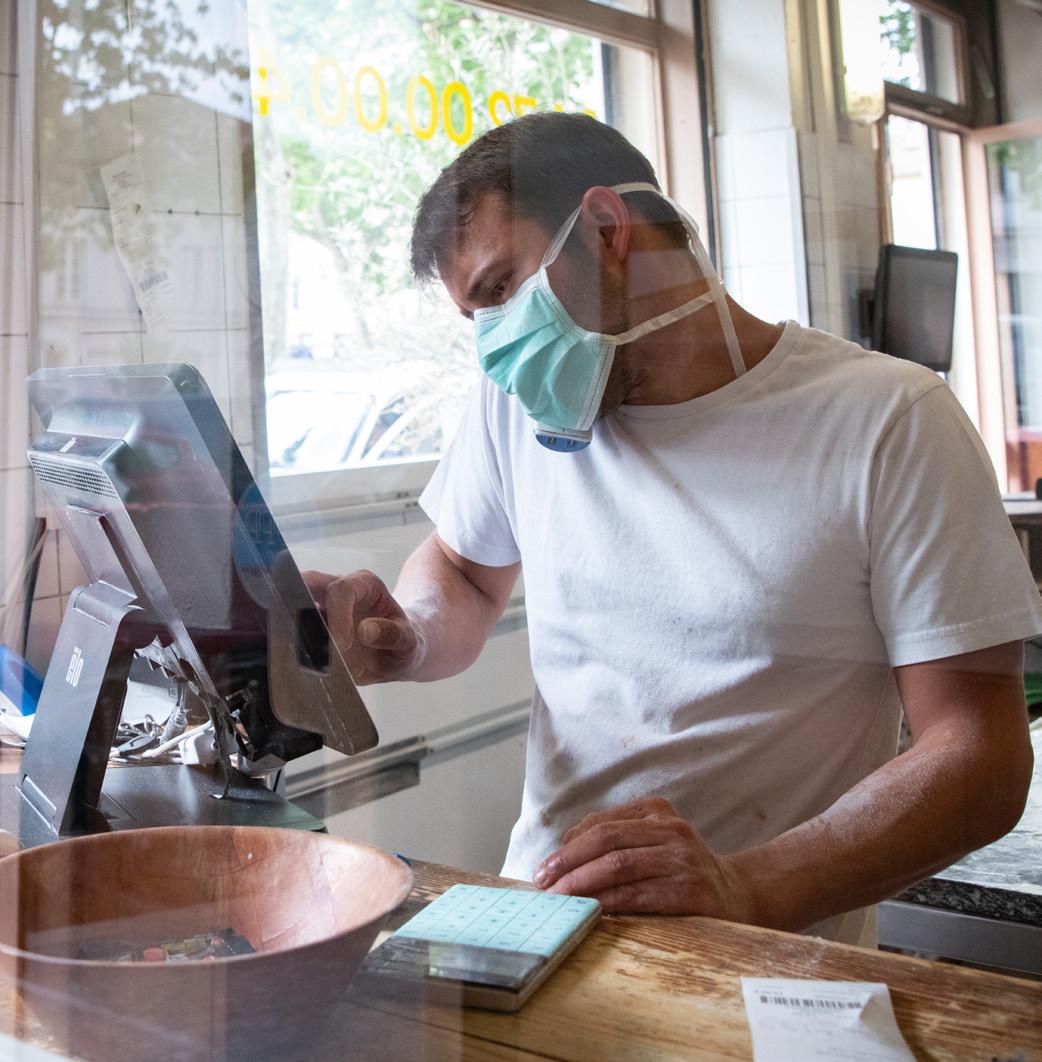
3 minute read
HEALTH
How Businesses Can Slow The Spread Of Covid-19 by: Heather Kretzer, Florida Department of Health in Bay County
The Florida Department of Health in Bay County wants businesses and employers to know they can prevent and slow the spread of COVID-19 . Employers should plan to respond in a flexible way to varying levels of disease transmission in the community and be prepared to refine their business response plans as needed. According to the Occupational Safety and Health Administration (OSHA), most American workers will likely experience low or medium exposure risk levels at their job or place of employment.
All employers need to consider how best to decrease the spread of COVID-19 and lower the impact in their workplace. This may include activities in one or more of the following areas: reduce transmission among employees; maintain healthy business operations; and maintain a healthy work environment. To prevent stigma and discrimination in the workplace, use only the guidance provided by the Centers for Disease Control and Prevention (CDC) to determine risk of COVID-19 infection. Do not make determinations of risk based on race or country of origin and be sure to maintain confidentiality of people with confirmed coronavirus infection. There is much more to learn about the transmissibility, severity, and other features of COVID-19 and investigations are ongoing.
There are five key things you can do to keep your employees and clients healthy. This includes; 1. Encouraging employees to stay home when they are sick, 2. Implementing flexible sick leave and supportive policies and practices, 3. Educating employees on how they can stop the spread, 4. Practicing social distancing, and 5. Performing routine cleaning and disinfection of your workplan. More details on educating employees and social distancing practices as well as resources are listed below.
Educate employees about how they can reduce the spread of COVID-19:
› Employees can take steps to protect themselves at work and at home. Older people and people with serious chronic medical conditions are at higher risk for complications.
› Follow the policies and procedures of your employer related to illness, cleaning and disinfecting, and work meetings and travel.
› Stay home if you are sick, except to get medical care. Learn what to do if you are sick.
› Inform your supervisor if you have a sick family member at home with COVID-19. Learn what to do if someone in your house is sick.
› Wash your hands often with soap and water for at least 20 seconds. Use hand sanitizer with at least 60% alcohol if soap and water are not available.
› Avoid touching your eyes, nose, and mouth with unwashed hands.
› Cover your mouth and nose with a tissue when you cough or sneeze or use the inside of your elbow. Throw used tissues in the trash and immediately wash hands with soap and water for at least 20 seconds. If soap and water are not available, use hand sanitizer containing at least 60% alcohol. Learn more about coughing and sneezing etiquette on the CDC website.

› Clean AND disinfect frequently touched objects and surfaces such as workstations, keyboards, telephones, handrails, and doorknobs. Dirty surfaces can be cleaned with soap and water prior to disinfection. To disinfect, use products that meet EPA’s criteria for use against SARS-CoV-2external icon, the cause of COVID-19, and are appropriate for the surface.
› Avoid using other employees’ phones, desks, offices, or other work tools and equipment, when possible. If necessary, clean and disinfect them before and after use.
› Practice social distancing by avoiding large gatherings and maintaining distance (approximately 6 feet or 2 meters) from others when possible.

Consider establishing policies and practices for social distancing. Social distancing should be implemented if recommended by state and local health authorities. Social distancing means avoiding large gatherings and maintaining distance (approximately 6 feet or 2 meters) from others when possible (e.g., breakrooms and cafeterias). Strategies that business could use include:
› Implementing flexible worksites (e.g., telework)
› Implementing flexible work hours (e.g., staggered shifts)
› Increasing physical space between employees at the worksite
› Increasing physical space between employees and customers (e.g., drive through, partitions)
› Implementing flexible meeting and travel options (e.g., postpone non-essential meetings or events)
› Downsizing operations
› Delivering services remotely (e.g. phone, video, or web)
› Delivering products through curbside pick-up or delivery
Resources:
OSHA Guidance for employers:
https://www.osha.gov/Publications/OSHA3990.pdf
Florida Department of Health’s Guidance for Businesses and
Employers: https://floridahealthcovid19.gov/businesses/
CDC’s Guidance for Businesses and Workplaces:
https://www.cdc.gov/coronavirus/2019-ncov/community/ organizations/businesses-employers.html
Florida Department of Health in Bay County:
http://bay.floridahealth.gov/






